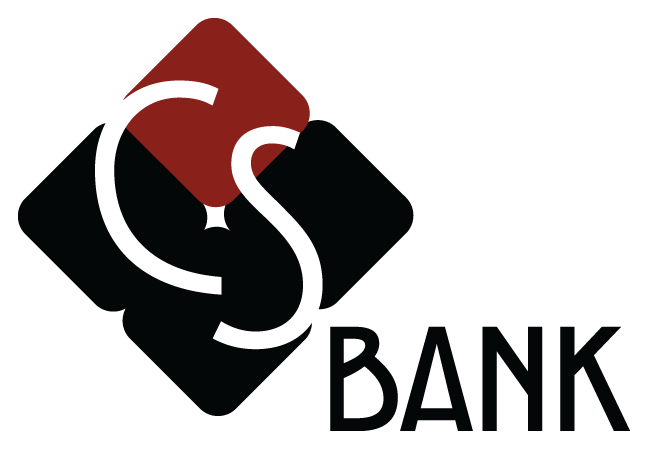not featured
2025-06-09
6/9/2025
Mortgage
published
%20(42).jpg)
What Do I Need To Apply For A Mortgage In Northwest Arkansas?
Buying your first home is a big and exciting milestone. It can also feel overwhelming, but CS Home Mortgage is here to help. In this ultimate guide, we’ll walk you through everything you need to apply for a mortgage. From explaining how to boost your credit score, to calculating your debt-to-income ratio and getting pre-approved, keep reading for everything you need to know about how to get a mortgage in Northwest Arkansas.
A Good Credit Score
Your credit score determines your eligibility to borrow money or, to put it another way, communicates to your lender how much risk they will take on by lending you money. The higher your score (850 is the highest possible score), the more desirable of a borrower you are. The minimum credit score needed to get a mortgage will depend on the type of home loan you apply for. Overall, the minimum credit score can range from 500 to 700. Learn more about the minimum credit scores required for specific loan types:
- Conventional Mortgage (Variable or Fixed Rate): Minimum 620 credit score
- VA Loan: Veterans Affairs doesn’t set a minimum credit score. Review your credit score with your lender to see if you qualify.
- FHA Loan: The minimum score depends on how much your down payment is. With at least 10% down, your credit score can be a minimum of 500. To put only 3.5% down, you’ll need a credit score of at least 580.
- USDA Loan: Minimum 580 credit score
- Jumbo Loans: At least 700
It’s a good idea to check your credit score before you start the mortgage application process. You may have free access to your FICO® Score through a credit card account. If not, you can purchase a score report from FICO®. There are also free apps like Credit Karma and Credit Sesame that show you an approximate score based on the major credit reporting bureaus.
While you’re reviewing your credit score, grab a free credit report from AnnualCreditReport.com, the only website authorized under Federal Law to provide free credit reports. If you see any errors or signs of fraud on your report, notify your bank or lender immediately to get it resolved.
If your credit score doesn’t meet the minimum requirements for your loan of choice, you’ll need to spend some time improving it before you apply for a mortgage. If you’ve had negative credit events in the past, such as bankruptcy, you may need to wait a certain length of time before buying a home.
So, what steps can you take to improve your credit score?
- Pay bills on time every month. If you have trouble keeping track of due dates, use CSB.ePay to schedule one-time or recurring payments.
- Pay down credit card balances. Using more than 30% of your available credit limit (known as your credit utilization ratio) hurts your score.
- Don’t open new accounts all at once. In fact, as you are preparing to apply for a mortgage, try to avoid applying for any new credit cards or loans unless it’s absolutely necessary.
A Healthy Debt-To-Income Ratio
Once you have a handle on your credit score, you can calculate your debt-to-income ratio, which is another important metric lenders use to determine your creditworthiness. If your debt-to-income ratio is too high, you may have trouble managing monthly mortgage payments.
What is a debt-to-income-ratio (DTI)?
Your DTI is a calculation of your total monthly debt payments (car loan, student loan, personal loan, credit card balance, etc.) divided by your total monthly gross (pre-tax) income
For example, if your monthly debt payments are $700 and your monthly gross income is $5,000, your DTI would be 14%. That is well within the “good” range of 43% or less.
If your DTI is higher than 43%, you’ll want to pay down some of your debt balances before you apply for a mortgage. If you have multiple credit card balances, you may want to use the snowball or avalanche methods to pay off your credit card debt as quickly as you can.
- Snowball Method: Start with the lowest balance. Pay as much as you can toward this account each month, while making minimum payments on everything else. Once the lowest balance is paid off, move on to the next lowest balance.
- Avalanche Method: Start with the highest interest rate, regardless of balance size. Pay as much as you can toward this account each month, while making minimum payments on everything else. Once the highest interest rate card is paid off, move on to the next lowest balance.
Starting or adjusting your budget can help you stay on track to pay down debt and meet your goal of becoming a homeowner.
A Steady Job
Part of applying for a mortgage loan is collecting the supporting documents your lender needs to process your application. This includes proof of income, usually in the form of paystubs, as well as your most recent W2. While your credit score and debt-to-income ratio demonstrate your ability to manage debt and make on-time bill payments, your employment status shows how much money you have coming in to pay your mortgage and other expenses.
Just as you don’t want to take out any new loans while applying for a mortgage, you also don’t want to change jobs before you close on your home. Your lender will check your employment status once more before Closing Day. If you switch jobs or lose your job, it could derail your mortgage application.
In general, you want to be able to demonstrate at least two years of continuous employment, though not necessarily in the same job. If you are self-employed as a business owner or freelancer, you’ll need to show at least two years of income history.
Down Payment
With the exception of VA loans, which offer up to 100% financing, you need a down payment to get a mortgage and buy a home. This is measured as a percentage of the purchase price–for example, if your home costs $150,000, putting 20% down would mean a payment of $30,000. However, 20% down is not always a requirement.
While putting 20% down on a conventional or other type of mortgage means you don’t have to pay for private mortgage insurance (PMI), you can also put less down with the following mortgage loans:
- VA Loans: Eligible servicemembers and veterans can borrow up to 100% of the purchase price without having to pay mortgage insurance.
- FHA Loans: Borrow up to 96.5% of the purchase price, depending on your credit score. Mortgage insurance is required if you put less than 20% down.
- USDA Loans: Can borrow up to 100% of the property’s appraised value. Mortgage insurance is required if you put less than 20% down.
You will need to show savings account statements to prove you have the funds for your down payment. If you are using gift money from a parent or other relative, you’ll need them to write and sign a letter saying that there is no repayment expectation for the financial gift.

Mortgage Insurance
As mentioned, if you don’t put 20% down, you may need to pay a one-time and/or monthly mortgage insurance premium. This makes it possible for you to qualify for your mortgage with a lower down payment, but it is also an extra expense that you will have either for the life of your loan or until you have 20% equity in your home.
What is mortgage insurance?
Mortgage insurance protects your lender in the event that you default on your mortgage loan. There are different types of mortgage insurance for different loans:
- Private Mortgage Insurance (PMI): Usually paired with conventional loans. Rates vary depending on your down payment amount and credit score. PMI is paid monthly, as part of your mortgage payment, with little to no initial payment due at closing. You may be able to cancel PMI when you reach 20% equity in your home.
- FHA Mortgage Insurance: Required for all FHA loans. There is an upfront cost at closing as well as a monthly premium payment.
- USDA Mortgage Insurance: Similar to the FHA loan program–premiums are paid at closing and as part of your monthly payment.
As mentioned, VA loans are the one exception to the mortgage insurance rule. However, you do have to pay a funding fee upfront to get a VA mortgage. The fee amount will depend on the type of military service, down payment amount, disability status, whether the loan is for purchase or refinance, and whether it’s a first or subsequent VA loan.
Get pre-approved for your mortgage loan
While not officially required, getting pre-approved (or pre-qualified) for your mortgage loan is still a good idea.
For one thing, your real estate agent will probably ask to see your pre-approval letter before they invest time in taking you to see properties. Getting pre-approved shows that you’re a serious buyer (as opposed to “just looking”) and also that you’re a qualified buyer. Taking this first step may help to speed up the complete mortgage application process. It also makes you a more attractive buyer to sellers when you’re ready to make an offer.
For one thing, your real estate agent will probably ask to see your pre-approval letter before they invest time in taking you to see properties. Getting pre-approved shows that you’re a serious buyer (as opposed to “just looking”) and also that you’re a qualified buyer. Taking this first step may help to speed up the complete mortgage application process. It also makes you a more attractive buyer to sellers when you’re ready to make an offer.
The pre-approval process is fairly simple and quick. You’ll need to provide some basic personal and financial information. The resulting pre-approval letter will provide a max borrowing amount and interest rate, good for a certain amount of time (and subject to final credit approval).
A pre-approval letter also answers the question, “how much mortgage can I afford?” Knowing how much you can borrow will also help you shop smarter for a house. You’ll know how much you can get from your homebuying wish list and what you might have to compromise on.
An Accepted Offer on a Home
You get pre-approved to know what type of house you can afford and your likelihood of getting a mortgage for a house in a particular price range. Once you find the right house for you, you make an offer. After your offer is accepted, you’re ready to proceed with the mortgage application process.
As part of the mortgage underwriting process, your lender will conduct a professional home appraisal to determine market value. If you’ve made an offer for more than the appraised value, you may have to put more down so that your loan doesn’t exceed the value.
It’s also a good idea to pay for a professional home inspection. This will let you know if there are any major issues with the home before you buy it. Depending on the terms of your contract, you may be able to negotiate further if anything comes up in the inspection.
Finally, homeowners insurance is required to close on your mortgage loan. It’s not required by the state of Arkansas or by Missouri, but your mortgage lender will require it for the loan.
What Documents are required for a Mortgage?
Download our free mortgage checklist to keep you organized throughout the application process. The documents required for a mortgage include:
- Current mortgage statements (if you already own a home)
- Proof of property insurance
- Driver’s License
- Recent Paystubs
- Recent W-2 or tax returns
- Bank Account and Investment Account statements
- List of current debts
CS Home Mortgage is Here to Guide You Though the Mortgage Process!
Learn more about FHA loans, Rural Development loans, USDA loans, and VA loans. Ready to apply for a mortgage in NW Arkansas? CS Home Mortgage is CS Bank’s full-service mortgage division. Contact our locally-based mortgage lenders by giving us a call, visiting one of our locations in Harrison, Berryville, Huntsville, Eureka Springs, Holiday Island, Arkansas, or Cassville, Missouri, or applying for a mortgage online.


